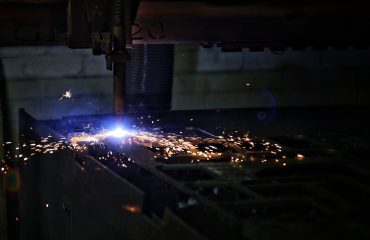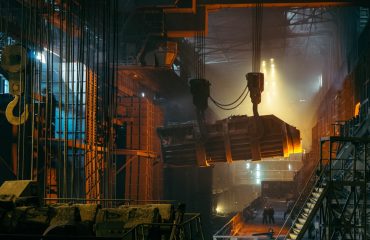Steel, a ubiquitous material in modern construction and engineering, offers unparalleled strength, durability, and versatility. Its applications span a vast range, from towering skyscrapers to intricate bridges and robust industrial machinery. This post delves into compelling case studies that showcase the remarkable capabilities of steel solutions, highlighting their impact on various industries and projects.
1. Steel’s Role in Iconic Skyscraper Construction
Skyscrapers push the boundaries of engineering and architecture, demanding materials capable of withstanding immense weight and pressure. Steel’s high strength-to-weight ratio makes it an ideal choice for the structural frameworks of these colossal buildings. Consider the Burj Khalifa, the world’s tallest building. Its intricate steel exoskeleton, a marvel of engineering design, supports the immense weight of the structure and allows for its towering height. The meticulous planning and execution involved in fabricating and assembling this complex steel framework are testaments to the precision and adaptability of steel solutions. The use of high-strength steel grades, coupled with advanced welding techniques, ensured the structural integrity and stability of the building, even under extreme weather conditions. Furthermore, the design incorporated considerations for wind load and seismic activity, demonstrating the material’s ability to withstand significant forces. The Burj Khalifa’s success serves as a powerful example of steel’s capacity to facilitate ambitious architectural visions.
2. Revolutionizing Bridge Design with Steel
Bridges are critical infrastructure components, connecting communities and facilitating trade. Steel’s inherent strength and formability have revolutionized bridge design, enabling the creation of longer spans and more aesthetically pleasing structures. The Golden Gate Bridge, a globally recognized icon, stands as a testament to the power of steel. Its suspension design, utilizing massive steel cables and towers, demonstrates the material’s tensile strength and ability to support significant loads. The bridge’s longevity and resilience against harsh environmental conditions underscore the durability and corrosion resistance of properly treated and maintained steel. Modern bridge designs leverage advanced steel alloys and fabrication techniques, allowing for lighter, more efficient structures that are both environmentally friendly and cost-effective. Case studies involving innovative bridge designs, like cable-stayed bridges and arch bridges, showcase the continuous evolution of steel solutions in this critical sector.
3. Steel’s Indispensable Role in Industrial Applications
Beyond construction, steel plays a crucial role in various industrial applications. From heavy machinery to pipelines and manufacturing equipment, steel’s robust nature makes it indispensable. Consider the manufacturing of large-scale industrial equipment like cranes and excavators. These machines require high-strength, wear-resistant steel components to withstand heavy loads and harsh operational conditions. The selection of specific steel grades with properties tailored to the application is paramount. For instance, high-carbon steel might be used in components requiring extreme hardness, while low-alloy steels might be preferred where weldability and ductility are critical. Case studies involving the design and fabrication of such equipment highlight the importance of material selection and the engineering expertise required to optimize steel’s performance in demanding industrial environments. Furthermore, the use of steel in pipelines for transporting oil and gas showcases its ability to withstand high pressures and corrosive substances, ensuring the safe and efficient transport of vital resources.
4. Sustainable Steel Solutions: Minimizing Environmental Impact
Concerns about environmental sustainability are increasingly influencing material choices in construction and engineering. The steel industry is actively pursuing sustainable practices to reduce its carbon footprint. Recycling steel is a highly efficient process, requiring significantly less energy than producing virgin steel. Many modern projects incorporate recycled steel content, contributing to a circular economy and minimizing waste. Furthermore, advancements in steel production technologies are leading to more energy-efficient processes and the development of new steel alloys with improved properties, leading to lighter structures and reduced material consumption. Case studies examining the life-cycle assessment of steel structures, including embodied carbon calculations, demonstrate the ongoing efforts to minimize the environmental impact of steel solutions. The use of sustainable steel practices contributes to greener construction and infrastructure development.
5. Advanced Steel Technologies and Future Applications
Research and development in the steel industry continue to push the boundaries of material science, leading to the development of advanced steel alloys with enhanced properties. High-strength low-alloy (HSLA) steels offer improved strength and ductility, allowing for lighter and more efficient structures. Advanced high-strength steels (AHSS) are used in automotive applications to improve fuel efficiency and safety. These advancements are driving innovation across various sectors. Case studies involving the application of these advanced steel technologies in diverse fields, such as aerospace and renewable energy, showcase the potential for future breakthroughs. The ongoing exploration of new steel alloys and fabrication techniques promises even more sustainable and high-performance steel solutions in the years to come.
In conclusion, these case studies demonstrate the remarkable versatility and enduring strength of steel solutions. From iconic skyscrapers to critical infrastructure and advanced industrial applications, steel continues to play a vital role in shaping our world. The ongoing commitment to innovation and sustainability within the steel industry ensures its continued relevance and contribution to a more efficient and environmentally conscious future.
SEO Tags:
- Steel Solutions
- Steel Case Studies
- Steel Construction
- Engineering with Steel
- Sustainable Steel




